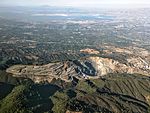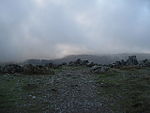West Santa Clara, California
West Santa Clara is an unincorporated census county division (CCD) located on the eastern side of the Santa Cruz Mountains in northwest Santa Clara County, California. The area covers approximately 50 square miles (130 km2), much of it open space, and contains Boronda Lake, Felt Lake, and Lake Ranch reservoirs, as well as Sanborn and Stevens Creek county parks. The Foothills, Los Trancos, Monte Bello, Pearson-Arastradero, Picchetti Ranch, Rancho San Antonio and Saratoga Gap preserves are also located in the area. As of the 2010 US Census, the population was 7,529 residents of whom 67.7% were non-Hispanic white, 22.8% Asian, 4.8% Hispanic, and 4.7% of other races, with a median age of 50.0 years old. As of 2009, the median income was $169,186 and median home price $1,527,451.Most residents and businesses in the area use postal zip codes from neighboring cities of Palo Alto, Portola Valley, Los Altos Hills, Cupertino, and Saratoga. The telephone area codes are 408 (Santa Clara County), and 650 (overlaps with San Mateo County).
Excerpt from the Wikipedia article West Santa Clara, California (License: CC BY-SA 3.0, Authors).West Santa Clara, California
Montebello Terrace,
Geographical coordinates (GPS) Address Nearby Places Show on map
Geographical coordinates (GPS)
| Latitude | Longitude |
|---|---|
| N 37.305833333333 ° | E -122.12305555556 ° |
Address
Montebello Terrace
Montebello Terrace
California, United States
Open on Google Maps









